- myFICO® Forums
- Types of Credit
- Credit Cards
- Guide to travel cards
- Subscribe to RSS Feed
- Mark Topic as New
- Mark Topic as Read
- Float this Topic for Current User
- Bookmark
- Subscribe
- Mute
- Printer Friendly Page
Guide to travel cards
Is your credit card giving you the perks you want?
Browse credit cards from a variety of issuers to see if there's a better card for you.
- Mark as New
- Bookmark
- Subscribe
- Mute
- Subscribe to RSS Feed
- Permalink
- Report Inappropriate Content
Guide to travel cards
NOTE: This does not go over the ins and outs of every single card. Rather, it describes some pros, cons, and things to consider for the different types. Please leave input and opinions and I’ll update accordingly. For the purpose of this, I would consider airfare and hotels as travel.
There are three different types of travel cards: fixed value, transfer cards, and co-branded cards. Each card has its benefits as well as its shortcomings. Each one could be best suited for one person and a bad choice for another, depending on spending habits and redemption. I will address each of the different types below. Please understand that I have listed SOME cards as examples, and certainly NOT all of them. First though, I want to cover one subject.
Miles & points – Each type of card or program will typically refer to their program as earning points or miles. However, some are earned and redeemed in different fashions. The easiest way to think about miles and points are as a term to refer to an increment or amount of value in a rewards program. For example, some airline loyalty programs earn miles through distance flown on their airlines. However, their co-branded cards will earn miles based on the amount spent on the card. Fixed value cards may say that they earn ‘miles’ but those miles are really just worth cashback on travel. To save yourself the headache, just consider each programs miles or points as the term they use to indicate earning rewards.
Fixed value cards (Arrival and Venture)
Pros – Can earn elite status on hotels and airfare with spend, complete freedom to choose brand, no worrying about award availability
Cons – Miles never worth more than 1 cent per mile, no brand perks
These cards earn ‘miles’ on each purchase. In the case of the two cards referenced, they both earn two miles on each dollar spent on the card, regardless of what that dollar is spent on. To redeem those miles, you put a charge for travel on your credit card and then use miles to redeem for a statement credit at a rate of 1 cent per mile. For example, you could put a $400 airplane ticket on your card, and then redeem 40,000 miles to remove the $400 charge from your statement. One of the benefits of these cards is that you can still earn elite status in loyalty programs. Since you can still make the purchase directly from the airline / hotel, you can still earn points on that stay / flight. Some cards also give you a bonus for redeeming for travel, like getting 10% of your points back upon redemption. Lastly, you can choose any company to spend your travel dollars with. This gives you a great deal of freedom when shopping for the best deal. The con of these cards is that your miles are never going to be worth more than 1 cent per mile. You also will not be given any special perks just for card ownership, like a free checked bag or automatic elite status at a hotel.
Transfer cards (Chase Sapphire Preferred, AMEX PRG and Everyday / Everyday Preferred, AMEX SPG, Citi Prestige)
Pros – Most frequently worth more than 1 cent per point, freedom to transfer points to multiple partners, different categories may earn more than one point per dollar
Cons – Transfer partners may be limited, points can be less than 1 cent per point, transferring to programs doesn’t count towards elite status
These cards earn points based on spend in different categories. Some may earn more points on certain categories, and some may earn one point across the board. These points (Ultimate Rewards points, Membership Rewards points, Starpoints) can be transferred to different transfer partners into their respective program’s rewards units. For example, maybe you need 25k Avios for a flight. Or maybe you need to transfer those 25k points to Hyatt to book a hotel room. The one thing to remember here when selecting a card is that different programs have different transfer partners, so be aware of that when deciding which card to apply for. Also, some programs transfer points at a ratio that is not 1:1, so double check that as well. However, these points may very well be worth more than one cent per point. For example, maybe a flight from your city to Hawaii costs $750 round trip, but can be had on a transfer partner for 25k points. This means you would have earned 3 cents for every point earned. One thing to remember with these cards is that you are not going to be able to earn elite status when transferring those points for stays and flights, as opposed to buying the ticket and getting a statement credit.
Co-branded cards (Marriott Premier, AMEX Delta, Citi AAdvantage)
Pros – Earning towards elite status, more points / miles earned when spent on that brand, brand perks just for card ownership
Cons – Tied to one loyalty program, generally poor return on general spend
These cards earn points and miles for one specific program, such as Hilton HHonors, United Mileage Plus, or Delta Sky miles. These cards will always offer the most of their earning on dollars spent with the co-branded company. This can be a huge benefit if you spend most of your travel dollars with one or two companies. For example, if you travel a great deal for work and always fly United and stay at Marriotts, those cards will provide a definite benefit. They also provide certain benefits simply for having their card. These benefits could include priority boarding and a free checked bag for an airline, or elite status (without stay or night requirements) and a free annual night for hotels. Lastly, some of the more expensive airline cards will grant the cardholder a certain amount of qualifying miles after spending requirements are met. These qualifying miles are the ones used in the airline's loyalty program to determine elite status, and allow the cardholder to advance in the airline's loyalty program quicker than they normally would. Given the sizeable benefits that one can realize as a top tier elite in an airline loyalty program, this card benefit can be very valuable. The biggest downfall of a co-branded card is the lack of flexibility. Your benefits only apply with one brand, and your maximum earning potential is only realized when using that brand. Also, redemption is limited to that brand as well. For example, an airline might have an outrageous redemption amount for international travel. However, your only option is to cough up all the needed miles or shell out the cash and redeem the miles some other time for a better value. Keep in mind, though, that most airlines have partnerships with other airlines, allowing you to redeem their miles for flights on their partners.
Other things to consider:
Spending: How much you are planning on spending on a card can have a big impact on how much value you get out of that card. Think about how much money you plan on putting on your card each year. Also extremely important is what kind of spending you are going to put on your card. Are you going to put general spend like normal bills on your card? This is a big one. Some individual rewards programs have a very low value per point. Even though you may be earning one point per dollar spent on that card towards your favorite hotel that point may be worth less than a half a cent.
Category spend: Most transfer and co-branded cards offer increased earning when the purchase is in a certain category (2X points for travel or dining, for example). If you are calculating which card is going to be the most beneficial, make sure to pay attention to which categories the card offers and determine whether or not those categories are beneficial to you. Also, most categories for travel cards are uncapped. This means that you can earn points and miles for spending in that category at the higher rate no matter how much money you spend on that category in a given year, which can certainly add up depending on your spending patterns. However, there are a few travel cards that cap the higher category earning after a certain amount each year, so double check before deciding.
Redemption: This is extremely important, and often overlooked. Almost everyone is concerned about how many points they are earning, but what you are going to use those points on is just as important, if not more so. For example, if your main concern is international travel in business or first class, a fixed value card probably isn’t your best bet. International travel is usually very expensive, so using a fixed value card for to acquire the miles required for such a trip would take a huge amount of spending. Award travel can usually give you a much better value in this arena. Similarly, if you are going to redeem for smaller amounts with higher award mile requirements, then a fixed value card might be a better bet. Many people like to book their travel through a discount travel site. They are more concerned with paying the lowest amount out of pocket and having brand flexibility rather than sticking with a certain brand. This is a perfect scenario for a fixed value card. They could simply make their reservation through the discount travel site and then use their fixed value miles to credit the charge from their statement.
Point value: While points / miles earned on a fixed value card are always going to be worth the same amount, points earned with a transfer or co-branded card are going to fluctuate in value based on how you redeem them, significantly in some cases. For example, Hyatt points can be worth less than one cent or more than three cents, depending on which hotel you use them at. The same goes for airline miles. Miles redeemed for business class international travel are going to return a better value per mile than domestic coach flights. However, the importance of point value is entirely dependent on the cardholder. For example, if you don't travel internationally then the higher value per point / mile is irrelevant. I would factor point value into consideration for the purpose of selecting the right card for your needs, and then use the rewards as you see fit.
Statement credit: Many travel cards allow the cardholder to redeem their points or miles for a general statement credit (not a credit specifically on travel expenses like a fixed value card). Generally speaking, this is the worst value that you can achieve on redemption. At most, points and miles are redeemed for one cent each, and in many cases it is less. If you want to earn cash back in this fashion then you should get a cash back card instead of a travel card.
Three types of card benefits: There are three different kinds of benefits that a travel card can provide the cardholder. The first is providing rewards based on the cardholder making purchases with their card. This usually involves the card giving the cardholder 'X' amount of points / miles for every dollar spent, possibly including bonuses on different categories (2X points on dining for example). All travel cards include this benefit, with some values being better than others. The second type of benefit is a secondary benefit provided simply for owning the card and not based in any way on spending. If you are a cardholder who pays the AF (if there is one) and the account is not in default, you are eligible for these benefits. Some examples of this are airport lounge access, airline incidental credits, and annual free nights. The last type of benefit is a reward based on spending a certain amount on your card each year. For example, you could be granted a certain level of elite status in a loyalty program after spending a certain amount on your card in a calender year. It is important to review this information when selecting your card. Some cards have excellent rewards earning per dollar spent but come with minimal if any secondary benefits. Likewise, there are some cards that offer the cardholder excellent and valuable benefits that are completely unrelated to spending on the card. Be aware of this when deciding what card to spend money on.
Award Availability: This is one thing to keep in mind when using either co-branded or transfer cards. Fixed value cards can be redeemed for travel (with the definition of travel differing between lenders) at any time, so if you see a flight or room available and have the miles to cover it, it can be yours. However, hotel and airline rewards programs only have a fixed amount of room available for award redepmption. This means that you might not be able to redeem your points or miles on the day(s) you want despite having the required amount. Take note of this especially if you have a transfer card. Before transferring your points from your card to the specific loyalty program, first verify that the redemption you want is available for your desired dates.
Devaluation: Every so often hotels and airlines will perform a devaluation on their loyalty program. This means that redeeming points and miles for rewards like free nights in a hotel or free flights will take more miles and points than it used to for the same reward. One way to protect against this is by using a transfer card. In the case of a devaluation, you still have many other options for redemption.
Annual Fee vs non-annual fee: Many of these cards have annual fees, so take that into consideration. Some cards have versions with and without annual fees, with the AF versions providing more benefits. Take a look at whether or not the annual fee version of the card is going to provide you with enough return to offset the extra money every year. Be aware, however, that the no-AF versions of travel cards have (for the most part) significantly worse benefits than their AF counterparts and you may be better served by either a travel card with an AF or a straight cash-back card. For example, the no-AF version of the Venture card, the Venture One, awards 1.25 miles per dollar spent, which is worth 1.25% cash back towards travel. However, the Quicksilver card by the same company and also with no AF, offers 1.5% straight cash back, which is clearly the better deal.
Foreign transaction fee (FTF): If you do any amount of international travel, you will want to look for a card that does not have a foreign transaction fee. A foreign transaction fee is charged whenever a card that levies it is used out of country and is charged as a percentage of the total purchase price. This can be extremely detrimental for travel cards (assuming the card will be used internationally) as the FTF will frequently outweigh the value of the benefits that the card generates. Many travel cards these days do not have one, but some still do so check the card you are interested in before applying.
International acceptance: If you are planning on using the card internationally, you need to factor in whether or not the card's network (Visa, MC, AMEX) is accepted where you are going. If it is not, you are missing out on the rewards that you signed up for. This is especially true for transfer and co-branded cards. Travel is frequently a bonus spending category generating extra points or miles, which you cannot take advantage of if your card is not accepted during your travels overseas.
Fixed value card vs cash back card: Depending on how much you plan on spending on your card, a plain cash back card can often be a better value than a fixed value travel card. Many cash back cards do not impose an annual fee upon the user, which makes the card that much more profitable. One example is the Fidelity AMEX, which awards 2% cash back (into a Fidelity account) to the user for all purchases. The Fidelity AMEX does not have an annual fee. In comparison, the Arrival Plus earns 2.2% back for every dollar spent and carries an $89 annual fee. For the Arrival Plus to earn more than the Fidelity AMEX, the cardholder will have to run north of 40k through the card.
Sign-up bonus: Some cards offer a pretty sizeable sign-up bonus by meeting a minimum amount of spending in a certain amount of time (for example, $2000 on the card in 3 months). This bonus can be more than you might earn on the card in a year, so it is worth considering. Also, the sign-up bonus for a card can fluctuate from time to time with some offers being better than others. You should check before applying to see if the offer you are attempting to get is currently the best offer available. This is even more important as some companies are only allowing you to get a sign-up bonus once over a lifetime, making it even more important to maximize the bonus in the first place.
Effort: Some people are willing to calculate different values to find out which deal is going to be the best in an effort to maximize their value. This person would benefit from a transfer card. However, some people have absolutely no desire to look at award requirements across a bunch of different airlines and hotel companies, and simply want some return on their money that they can effortlessly redeem for travel. Fixed value cards are good here.
Travel frequency: If you travel all the time, then a co-branded card is a great benefit for you. Not only will you get the perks of branded benefits, a co-branded card spent at their specific brand will usually give you a higher benefit than the other two. If you simply want your daily spend to go to a family vacation at the end of the year, then fixed value and transfer cards might give you more flexibility in where you go and how to spend it.
Bonuses: Many cards will give you bonuses under certain circumstances. For example, using Arrival miles on travel will return 10% of your recently spent miles back to you. You can also fill out some travel stories on Barclay's site and the will give you a certain amount of miles for doing so. Having a Freedom will allow you to transfer those points to your CSP, making quarterly 5x categories available to you. There are certain combinations of cards, accounts, and redemptions that can maximize value, so double check that as well.
Shopping portal: This is another one that is frequently overlooked. Some cards and loyalty programs have shopping portals that will allow you to earn rewards points or miles for shopping online. Basically you start at their shopping portal, and then they redirect you to the site you would have gone to anyway. It's very easy, and a near effortless way to earn extra rewards. Plus, some of the shopping portals have a pretty significant amount of merchants to choose from.
Last thing to consider: Keep in mind that there is no right card. What works for one situation will not work for another. Some cards are better suited for frequent travelers, some for people that put massive amounts of money through them, and some for just everyday spending by people who have no inclination to learn all the intricacies of credit cards and loyalty programs and want to have one credit cards instead of seventeen. Just look at the above and do your research.
- Mark as New
- Bookmark
- Subscribe
- Mute
- Subscribe to RSS Feed
- Permalink
- Report Inappropriate Content
Re: Guide to travel cards
Good post Buddy! Thanks for sharing this.
- Mark as New
- Bookmark
- Subscribe
- Mute
- Subscribe to RSS Feed
- Permalink
- Report Inappropriate Content
Re: Guide to travel cards
In case anyone isn't aware, beginning Jan. 1st, Delta Skymiles is changing from a miles program to a dollar spend program. There have been a number of recent articles on this lately, and the consensus seems to be other travel rewards cards will follow suit.
- Mark as New
- Bookmark
- Subscribe
- Mute
- Subscribe to RSS Feed
- Permalink
- Report Inappropriate Content
Re: Guide to travel cards
@Countingpennies wrote:In case anyone isn't aware, beginning Jan. 1st, Delta Skymiles is changing from a miles program to a dollar spend program. There have been a number of recent articles on this lately, and the consensus seems to be other travel rewards cards will follow suit.
The changes don't deal with credit cards and miles earned (miles earned through credit card spend I mean). The changes relate to airline loyalty level (many people who are earning miles with credit cards are redeeming awards which wouldn't count towards loyalty status anyway). Funny enough some of the cards will waive the requirement to fly on delta and still grant some status if you put enough through on the card.
Starting Score: EQ: 714, TU 684
Current Score: EQ: 725 7/30/13, TU 684 6/2013, Exp 828 5/2018, Last App 8/5/17
Goal Score: 800 (Achieved!) In garden until Sepetember 2019
- Mark as New
- Bookmark
- Subscribe
- Mute
- Subscribe to RSS Feed
- Permalink
- Report Inappropriate Content
Re: Guide to travel cards
- Mark as New
- Bookmark
- Subscribe
- Mute
- Subscribe to RSS Feed
- Permalink
- Report Inappropriate Content
Re: Guide to travel cards
Awesome post. Will definitely return to it when I'm done gardening and ready to apply for a premium travel card.
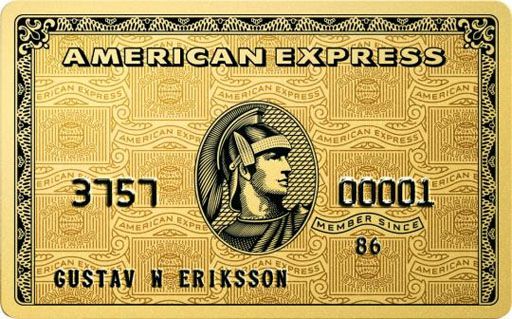
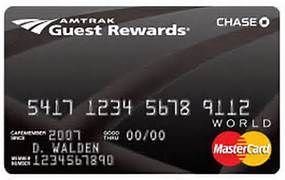
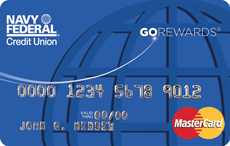

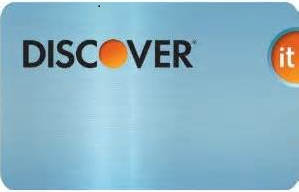
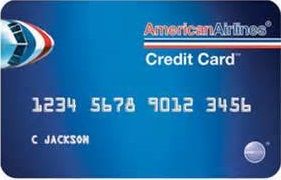

- Mark as New
- Bookmark
- Subscribe
- Mute
- Subscribe to RSS Feed
- Permalink
- Report Inappropriate Content
Re: Guide to travel cards
@jasmined wrote:Awesome post. Will definitely return to it when I'm done gardening and ready to apply for a premium travel card.
Glad it helped. There are a ton of things to consider, but you can really pick something that is well suited to your goals.
- Mark as New
- Bookmark
- Subscribe
- Mute
- Subscribe to RSS Feed
- Permalink
- Report Inappropriate Content
Re: Guide to travel cards
As others have said, great post! One thing it might be worth pointing out more, redemption availability. So transfer cards (and co-branded I guess), while you can get excellent redemption values using premium cabin international for example, as a practical matter it might be hard/impossible to get award seats for a family for particular fixed dates. So the increased value generally requires more flexibility. With fixed value cards, you can buy any seats openly available (but will be very costly if premium cabin international!)
- Mark as New
- Bookmark
- Subscribe
- Mute
- Subscribe to RSS Feed
- Permalink
- Report Inappropriate Content
Re: Guide to travel cards
@longtimelurker wrote:As others have said, great post! One thing it might be worth pointing out more, redemption availability. So transfer cards (and co-branded I guess), while you can get excellent redemption values using premium cabin international for example, as a practical matter it might be hard/impossible to get award seats for a family for particular fixed dates. So the increased value generally requires more flexibility. With fixed value cards, you can buy any seats openly available (but will be very costly if premium cabin international!)
Thanks LTL! I added a section called Award Availability at the bottom. Let me know if you think I missed anything.
- Mark as New
- Bookmark
- Subscribe
- Mute
- Subscribe to RSS Feed
- Permalink
- Report Inappropriate Content
Re: Guide to travel cards
excellent summary - thanks - I missed it somehow but saw it mentioned in a link on another post ![]()